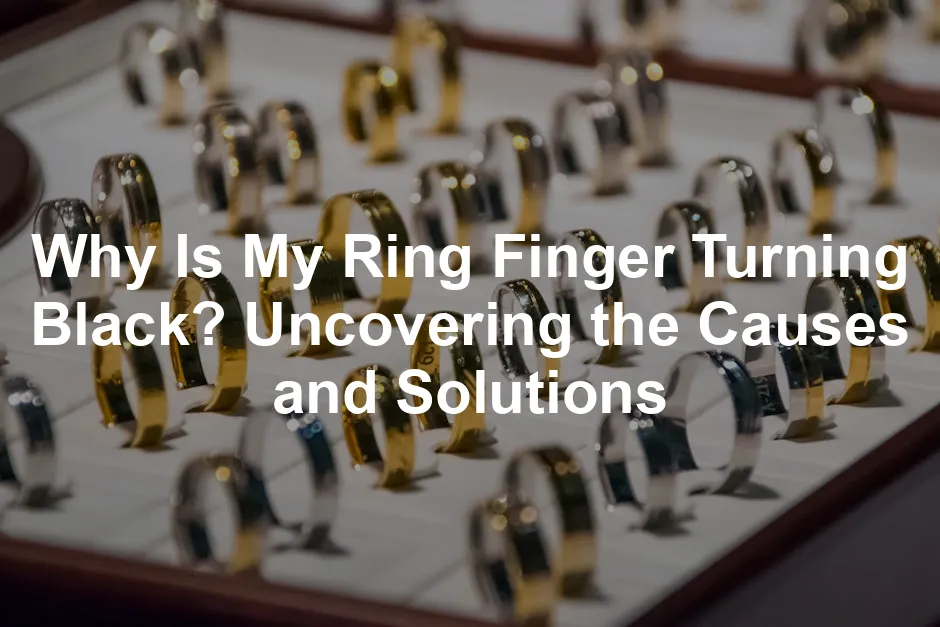
Why Is My Ring Finger Turning Black? Uncovering the Causes and Solutions
Why Is My Ring Finger Turning Black? Uncovering the Causes and Solutions
Introduction
Have you noticed your ring finger turning black? This common issue can happen to anyone who wears rings. It doesn’t matter what metal your jewelry is made from. Understanding why this happens is crucial for prevention and care.
Summary and Overview
Fingers can turn black for several reasons. The most common culprits are chemical reactions, sweat, and environmental factors. Although it may look alarming, this discoloration is usually harmless. However, it can be quite unsightly. In the following sections, we’ll look deeper into the causes, how to prevent it, and care tips to keep your jewelry and skin looking their best.
Understanding Skin Discoloration
What Causes Rings to Turn Fingers Black?
Rings are often made from various metals, each with unique properties. Common choices include gold, silver, and copper. While pure gold doesn’t tarnish, it’s frequently alloyed with other metals to increase durability. These alloys can react with your skin’s chemistry.
Skin acidity plays a significant role in this process. The level of acidity can vary due to diet, hormones, or even environmental factors. When combined with moisture from sweat or humidity, the reaction can lead to discoloration. Saltwater from ocean exposure can also contribute to this chemical interaction, making it essential to be mindful of where and when you wear your rings.
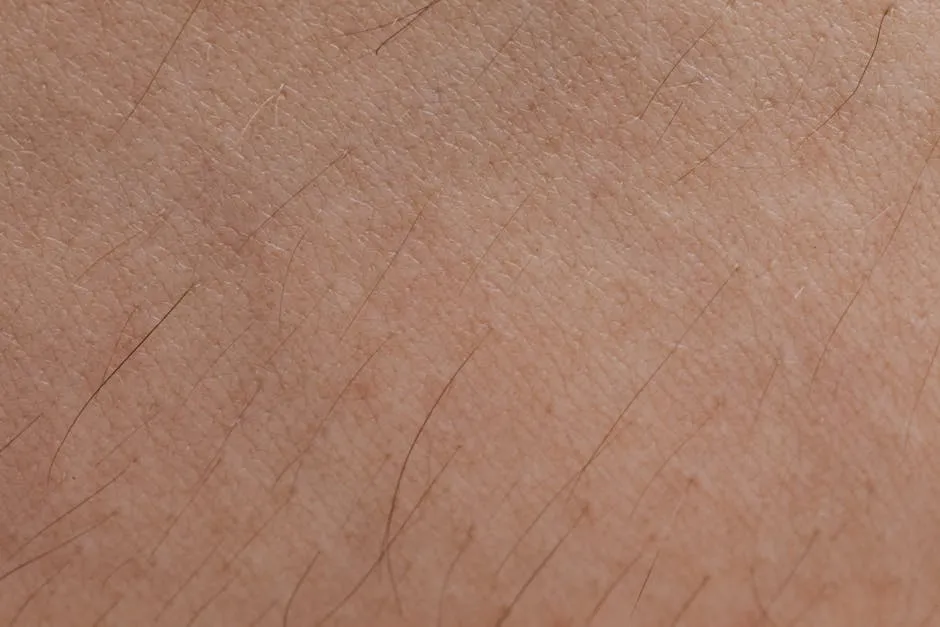
In humid conditions, if your hands sweat, the moisture can trap chemicals against the metal. This environment fosters a reaction that often results in black marks. The combination of sweat, skin oils, and environmental factors creates a perfect storm for discoloration. Understanding these interactions can help you manage and prevent this frustrating issue.
If you’re curious about the common reasons for this issue, check out this article on why is my ring finger turning black.
The Role of Gold Purity in Discoloration
Gold purity is measured in karats (k), with 24k being pure gold. But, pure gold is too soft for everyday use. Jewelers mix gold with other metals, creating alloys. Common gold alloys include 9k, 14k, and 18k.
As karat values decrease, the percentage of alloy metals increases. For example, 14k gold contains 58% gold and 42% alloy metals. These alloys can react with your skin, leading to discoloration. If you’re looking for a stunning addition to your collection, check out this 14k Gold Ring that blends beauty and durability.
Different types of gold can also react differently. Yellow gold typically has less copper, making it less prone to discoloration. In contrast, rose gold, which has higher copper content, is more likely to cause black marks. White gold, often mixed with nickel or palladium, can also lead to skin reactions, depending on the wearer’s sensitivity. Understanding these differences helps you choose jewelry wisely.
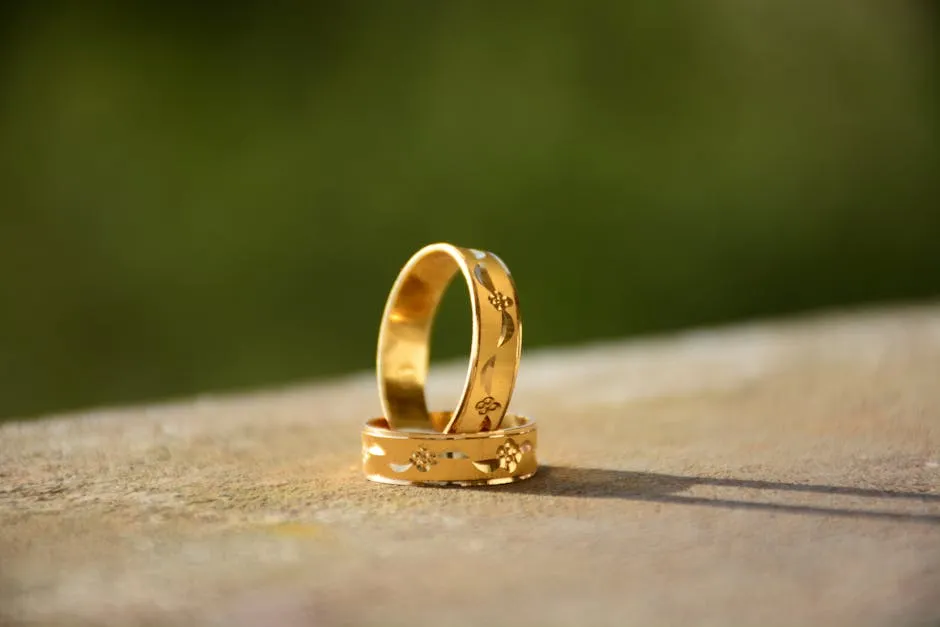
Environmental Influences
Environmental factors can significantly affect your ring’s interaction with your skin. Humidity plays a crucial role. When the air is moist, your skin tends to sweat more. This sweat traps moisture and chemicals against the metal, increasing the chances of discoloration.
Coastal living adds another layer of complexity. The salt in the air can react with metals in your ring. This combination of salt and moisture creates a perfect storm for tarnishing. Over time, these reactions can lead to unsightly black marks on your fingers.
Seasonal changes also matter. In hot weather, rings may fit tighter, causing more friction against your skin. This friction, combined with sweat, can exacerbate discoloration. Understanding these environmental influences can help you take proactive measures to protect both your jewelry and your skin.
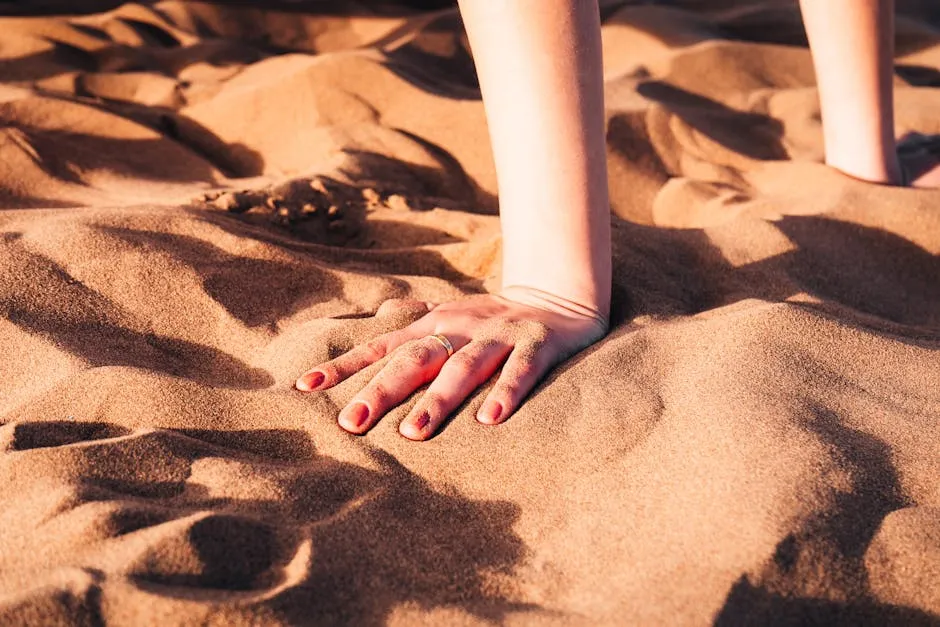
How to Prevent Your Ring from Turning Your Finger Black
Maintenance Tips
Keeping your ring clean is essential to prevent discoloration. Start with regular cleaning using a gentle soap solution. Warm water mixed with a few drops of mild soap works wonders. Avoid harsh chemicals that could corrode the metal. For a more professional touch, consider using a Jewelry Cleaning Solution that can restore your jewelry’s shine.
Make it a habit to clean your rings at least once a month. This simple routine can remove sweat and dirt that contribute to tarnishing. If you wear your rings daily, consider a quick clean every week.
Don’t forget the importance of professional cleaning. A jeweler can safely restore your ring’s shine and remove deeper tarnish. Schedule a professional cleaning at least once a year to maintain your jewelry’s beauty.
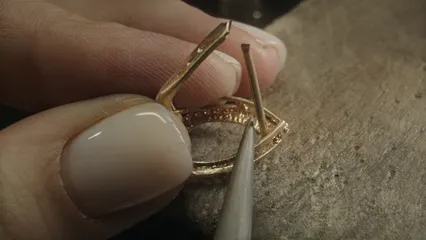
Protective Measures
Creating a barrier between your skin and the ring can minimize discoloration. One simple method is to use clear nail polish. Apply a thin layer on the inside of your ring. This acts as a shield against moisture and skin acids. Just remember to reapply it every few months, as it can wear off.
Another effective option is rhodium plating. A jeweler can apply a thin layer of rhodium, a highly reflective metal, to your ring. This not only enhances its appearance but also protects against tarnishing. While it may require periodic replating, the benefits often outweigh the costs, making it a smart investment for those prone to discoloration. If you’re considering this, you might want to check out a Rhodium Plating Kit to do it yourself!

Choosing the Right Jewelry
When selecting jewelry, consider materials that minimize skin discoloration. Higher karat gold, such as 18k or 22k, contains more pure gold and fewer reactive alloys. This reduces the likelihood of discoloration. If you’re in the market for something elegant, consider a Gold Ring 18k that adds a touch of luxury to your collection.
Alternative metals like platinum and stainless steel are excellent choices. Platinum is hypoallergenic and resistant to tarnishing. Stainless steel is durable and low-reactive, making it a popular option for everyday wear.
However, some metals may cause reactions. For instance, rings made of nickel or copper can lead to black marks due to their reactivity with skin oils and moisture. It’s wise to avoid these if you know your skin is sensitive to them.

When shopping for jewelry, always choose reputable jewelers. They can provide insights into the metal composition and recommend pieces that suit your skin chemistry. Investing in quality jewelry not only enhances your style but also protects your skin from unwanted discoloration. If you’re looking to store your beautiful pieces, consider a Jewelry Storage Organizer that keeps everything tidy and protected.
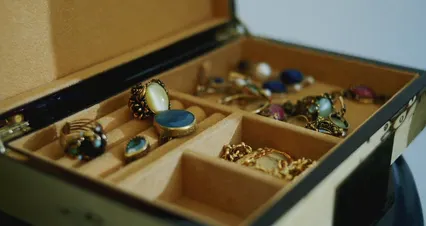
Conclusion
In summary, skin discoloration from rings stems from several factors, including metal composition and environmental influences. By understanding these causes, you can take proactive steps to prevent this issue.
Choose higher purity metals and be mindful of your activities to protect both your jewelry and skin. Remember, regular maintenance and careful selection will keep your rings looking beautiful and your skin free from discoloration.
If you’re interested in creating your own jewelry, a DIY Jewelry Making Kit could be just what you need to unleash your creativity!
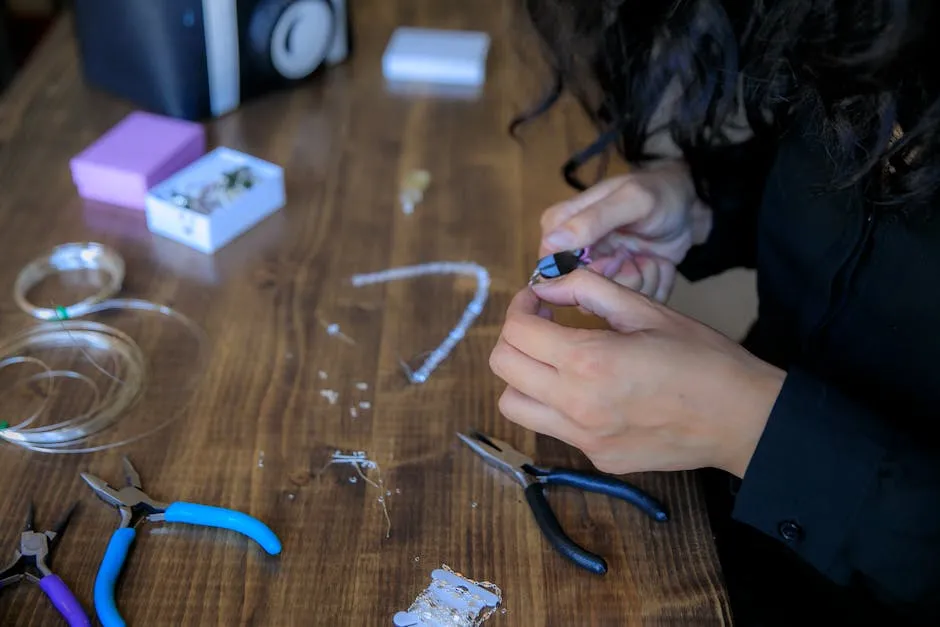
FAQs
Why does my gold ring turn my finger black?
Gold rings often contain alloy metals that can react with your skin’s chemistry. This reaction can cause discoloration, especially in lower karat gold.
Can sweat really cause my ring to discolor my skin?
Yes, sweat contains salts and oils that can corrode metals in your ring, leading to discoloration on your skin.
What are some safe methods to clean my ring?
To clean your ring, use a mixture of mild soap and warm water. A soft cloth or brush can help remove dirt. Consider professional cleaning for deeper tarnish removal.
Is it possible for any type of ring to turn my finger black?
Yes, various metals can cause discoloration, including gold, silver, and copper, especially when alloyed with reactive materials.
How can I tell if I have an allergic reaction to my jewelry?
Allergic reactions may cause redness, itching, or a rash. If you experience these symptoms, it’s best to remove the jewelry and consult a professional.
Please let us know what you think about our content by leaving a comment down below!
Thank you for reading till here 🙂
All images from Pexels




